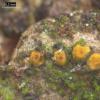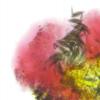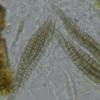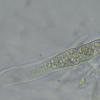
29-09-2012 00:21
Esquivel-Rios EduardoHi All.I found this fungi in a Ficus insipida peti

26-09-2012 21:48
Esquivel-Rios EduardoHi AllWe found this small cup fungi in the soil, d

24-09-2012 13:05
 Björn Wergen
Björn Wergen
Hello,I have found this small pyrenomycete on dead

26-09-2012 22:17
 Chris Yeates
Chris Yeates
Bonsoir touslast year I collected what was to me a

24-09-2012 17:53
Dear friends:On Castanea sativa wood I have collec
Note: Substrate corrected 24/02/2022

Thank you very much for the prompt identification as Trichonectria viburnicola! Clearly, I was misled by the yellow (top of the) perithecium and the positive KOH-reaction.
Little information about this species in the literature but the more on this site including your document of the Heidelberg collection and your message in 2013. Yes my collection was done in the Netherlands, so this is the second collection after the one in Steenbergen on Crataegus.
Cheers, Eduard






